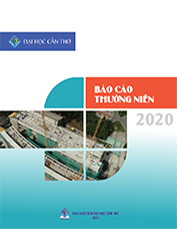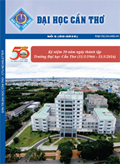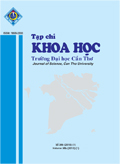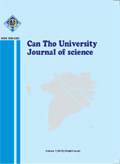Study on the survival of Colletotrichum spp. in the dragon fruit orchards
Abstract
In order to understand the origin of anthracnose disease damaging dragon fruit, study on the presence of Colletotrichum fungus in rainwater, ditch water, cannel, plant debris and soil samples at depths (0 - 10 cm) was
conducted in dragon fruit orchards. The results showed that Colletotrichum fungus existed in rain water, cannel,
plant debris and in soil collected from dragon fruit orchards in Tien Giang, Long An and Binh Thuan provinces.
The density of Colletotrichum fungal colonies at the time before, the middle and the end of the rainy season was
quite high and the difference was statistically significant. Eight strains of Colletotrichum were collected from rain
water samples, ditch water, dead tissue-plant debris and soil depth (0-10 cm) and differentiated from morphological characteristics (TL-N1, TL-Đ1, TL-N2, TL-Đ3, TL-N3, TL-D1, TL-D2, TL- Đ2). Artificial inoculation showed that
fungal strains TL-D1 and TL-D2 collected from plant debris had the highest disease ratio (65%; 60%) and disease
index (7.22%; 6.67%) that were significantly different with the fungal strains collected from rain water, ditch water
and soil. The remaining fungal strains had statistically significant difference in disease rate and indix compared with
the distilled water treatment. This proves that the collected strains of Colletotrichum fungi cause anthracnose disease
on dragon fruit and may be the source of anthracnose disease on dragon fruit.
Key words: Dragon fruit, Colletotrichum, inoculum survival, disease arising, rainy season






